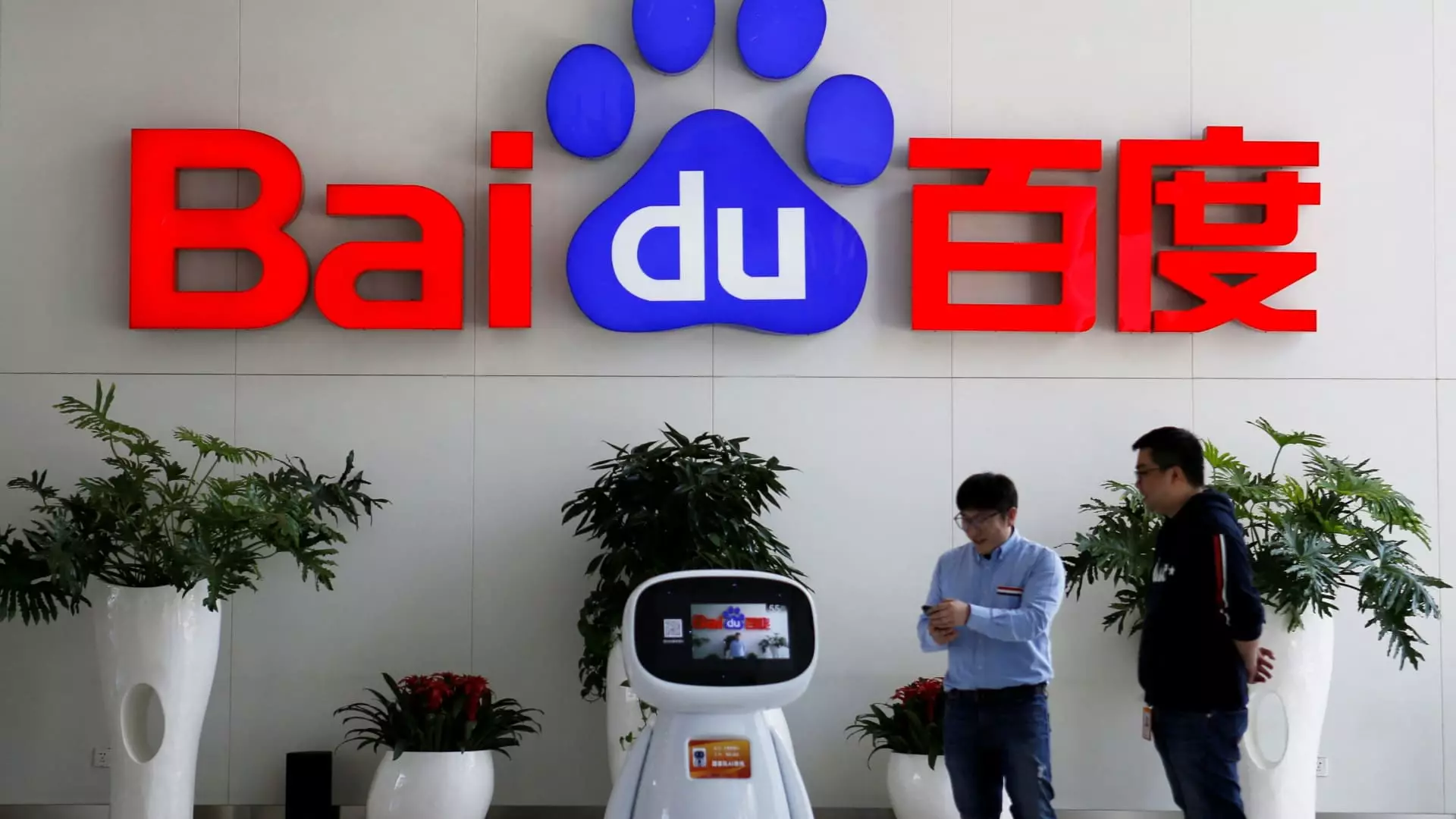In the fast-paced realm of artificial intelligence, tech giants are constantly battling for dominance. A noteworthy player in this arena, Baidu, is gearing up to unveil its next-generation AI model, Ernie 5.0, in the latter part of this year. This release marks a pivotal moment not only for the company but also for the broader landscape of AI development, especially as new competitors like DeepSeek introduce innovative models that challenge conventional benchmarks.
Baidu’s upcoming model is anticipated to feature significant advancements in multimodal processing. This implies that Ernie 5.0 will be adept at integrating and converting various forms of media—text, images, audio, and video—enhancing the user’s experience by generating content across different formats. The term “multimodal” suggests a departure from the traditional approaches where AI systems were often siloed, focusing solely on text or visual data. Instead, Ernie 5.0 promises an amalgamated experience where AI can, for instance, transform a textual description into a comprehensive video, drastically improving interactivity and engagement for users.
Foundation models like Ernie are designed to perform a variety of tasks that extend beyond basic comprehension and generation. They possess the capability to understand context and nuances in language, enabling them to deliver nuanced, contextually appropriate responses. This evolution in AI capabilities not only enhances user experience but also enables businesses to utilize these models in more sophisticated and impactful ways.
Baidu’s endeavors come at a time when Chinese tech firms are racing against each other to establish a foothold in the AI sector. The recent advancements by DeepSeek illustrate the intensity of this competition, as the startup’s open-source AI model caught global attention by delivering impressive reasoning capabilities at a fraction of the cost of established models like OpenAI’s ChatGPT. This shift in the market dynamics has prompted Baidu to rethink its strategies and accelerate the development of its AI technologies.
The urgency for Baidu to innovate is underscored by the performance of its stock against those of its rivals. Companies like Alibaba and ByteDance are achieving significant gains in their stock prices, while Baidu’s progress has been more modest. This discrepancy creates pressure for Baidu to revitalize its offerings, not only to reclaim market share but also to assert its position as a leading innovator in AI.
One of the standout claims from Baidu’s CEO, Robin Li, revolves around the potential to reduce the inference costs of foundation models by over 90% within just a year. This cost-effectiveness is critical in increasing productivity across various applications. The notion that reduced operational costs can lead to enhanced productivity encapsulates the core of technological innovation. By enabling organizations to harness advanced AI without the prohibitive costs traditionally associated with such technologies, Baidu could potentially change the landscape for businesses looking to integrate AI solutions.
This focus on cost efficiency may also attract more enterprises to adopt generative AI, pushing Baidu further ahead in the race. Their existing tools, such as the Wenku platform, which has seen a remarkable uptick in users, indicate that the market is receptive to innovative solutions that blend AI seamlessly into everyday business operations.
Baidu’s trajectory with the Ernie model reflects broader trends in the AI field, where staying ahead of technological advancements is crucial for survival. As the company prepares for the release of Ernie 5.0, it serves as a reminder of the perpetual evolution within artificial intelligence and the need for companies to adapt swiftly. The competitive atmosphere fostered by new entrants like DeepSeek denotes a vibrant sector where innovation is not merely encouraged but required.
Ultimately, the success of Ernie 5.0 will hinge not only on its technical capabilities but also on its ability to resonate with users and address real-world challenges. As the world anticipates its launch, the digital community remains engaged, eager to witness how Baidu will redefine expectations around AI’s potential in the near future. By harnessing the power of multimodal processing and emphasizing cost efficiency, Baidu seeks not just to compete but to lead in the AI race, aiming for a transformative impact across industries.

